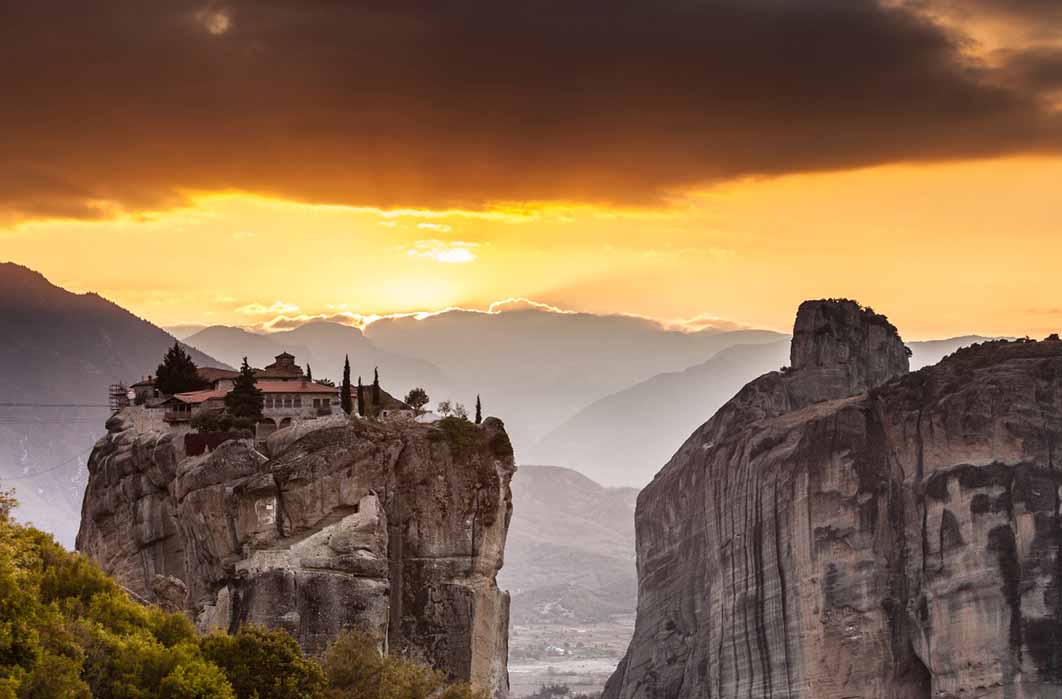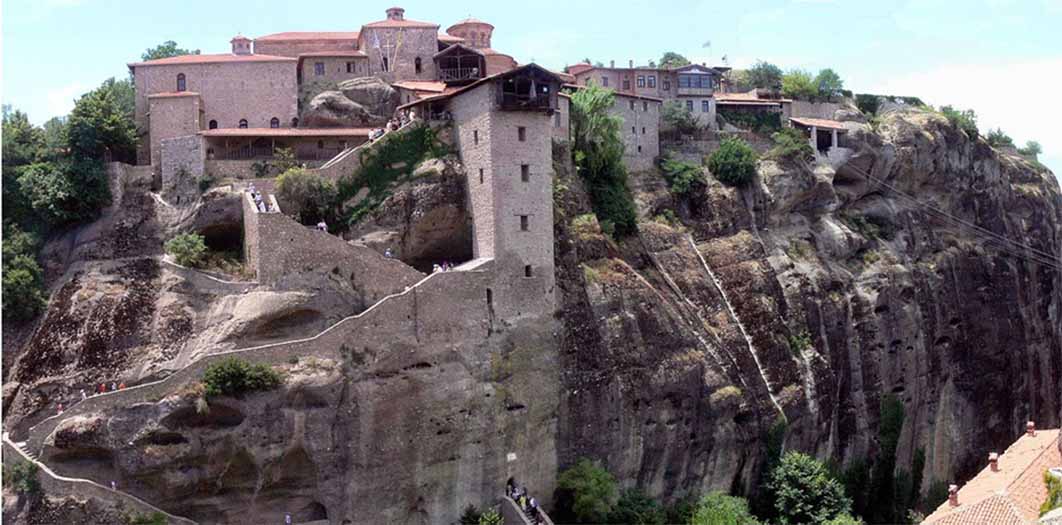
Magnificent Greek Orthodox Monasteries of Meteora, Suspended Between Heaven and Earth
Towering over the Thessalian Plain in Central Greece, is a majestic rock formation, called Meteora, meaning ‘elevated’ or ‘hanging from heaven’, where Eastern Orthodox monasteries literally cling to the cliff tops, suspended between heaven and earth. Petrified diatoms, comprising several genera of microalgae found in oceans and rivers, hint that millions of years ago, this region was once the estuary of a river. Debris from northern Central Europe washed down the river and as the water of the estuary slowly drained, millions of years of corrosion shaped the conglomerate and sandstone into the outstanding pillars.

Aerial view of the landscape of Meteora with the monasteries perched on the cliffs (GDMpro S.R.O./ Adobe Stock)
Mythological and Political Landscape of Meteora
Today the Pineios River, flowing from the Pindos Mountain, snakes through the valley. The river is named after the Thessalian god Peneus, a Potamoi, who according to mythology, was the father of Daphne. Apollo, afflicted by an arrow of Eros, fell in love with Daphne, and her father Peneus turned her into a laurel tree to protect her. Although legend tells that the rock pillars on the ancient riverbed were ‘dropped from heaven’, the apt naming of ‘Meteora’ can be ascribed to the 14th-century monk Athanasios Koinovitis. He was an educated monk who travelled from Constantinople and Crete to the monastic settlement at Mount Athos, from where he eventually fled to Meteora. In 1344 he founded the first monastic community at Meteora, with his spiritual mentor Gregorios and 14 other monks, to build the Grand Meteoro monastery.
But Meteora had been inhabited before Athanasios arrived. Already in the ninth century ascetic hermit monks inhabited the fissures in the cliffs. By the 11th century many monks lived in caves and in the 12th century, Orthodox monks fleeing persecution of the Turkish and Frankish marauders found solace and sanctuary by establishing rudimentary sketes – communal living comprising of a number of small cells that act as the living quarters with a centralized church or chapel, in this case the Church of Theotokos (Mother of God), below the Agios Nicholas Monastery.

The sacking of Constantinople in 1204 by the Crusaders, by Palma il Giovane (Public Domain)
In 1204 the Roman Catholic Crusaders sacked Constantinople, seat of the Orthodox Christian Church, fragmenting the Byzantine Empire and then founded several new Crusader states, known as the Frankokratia. The end of the Frankokratia in most Greek territory came with the Ottoman conquest. By the end of the 14th century the Ottomans began to make increasingly threatening overtures towards the fertile plain of Thessaly. The waning Byzantine Empire finally fell to the Ottoman Empire in 1453 when Mehmet II conquered Constantinople.
- Meteora: Majestic Greek Monasteries Suspended in the Air
- Ancient manuscript returns home to Greek monastery on Mount Athos
- Female Remains Found at Strictly Male-only Greek Monastery
Even when the Ottomans ruled Greece, Meteora remained an outpost for Christianity. By the 16th century it had expanded to include 24 monasteries perched on the cliffs, all providing safe havens for monks, but also depositories for Christian literature, manuscripts, relics, frescoes and gold-leafed icons. Invaders were deterred by impenetrable access, for only by rope ladders ascending to precarious platforms could one reach the monasteries. The first ascetics scaled the cliffs by wedging timbers into the rock face to build these perched platforms and often had to jump from one platform to another. Building material, provisions and the infirm were hoisted up in baskets or nets. The ropes were only replaced when they broke ‘at God’s will’ and the rope-spool cranes are still visible in the monasteries, though no longer in use. In 1922 bridges were constructed to link the pillars and steps were carved into the rocks, which are still used to gain access to the remaining six monasteries.





